Welcome to the Year of Ox! Here are some pics taken from Singapore Chinatown just before Chinese New Year. These cute golden oxen are just located at Chinatown Point.
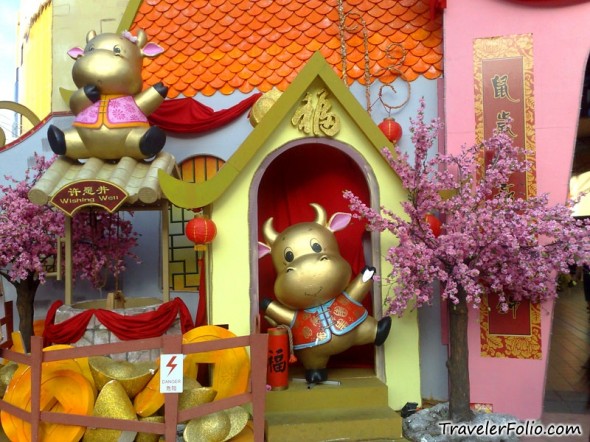
As I mentioned in my earlier Chinese New Year article, red is liberally used in all decoration during this festive season. Someone once asked, “Is red the main color of China (clothes, lights, sauce, hong-bau, firecrackers, communism, flag, roofs, etc)?
Here is an answer which I found from the web: Red symbolizes good fortune. There is an ancient Chinese legend about a man-eating beast called “Nian” which is a predatory creature. To scare off Nian, people covered their homes with the color red and filled the air with loud noises, ie. fire crackers.
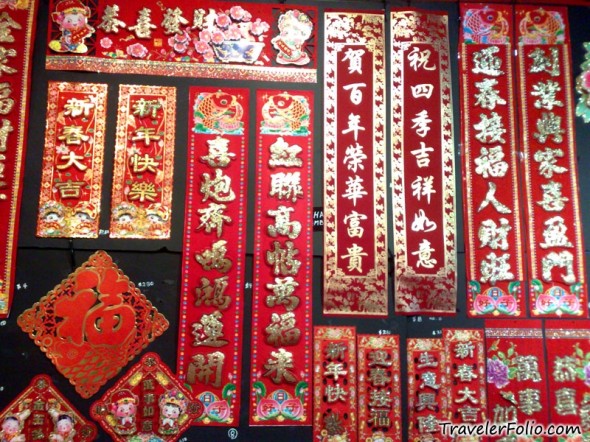
Chinese like to grace their gates and doors with Chinese New Year’s couplets which are written on two strips of red paper. The red couplets are composed of sentences that complement each other and often rhyme. Nowadays, we hardly see handwritten couplets; these are all printed with different designs.
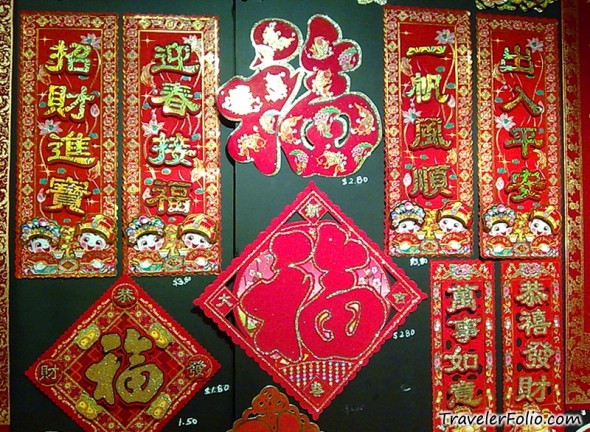
Of cos, these are not the real fire crackers. Fire crackers are banned in Singapore, unless for official use.
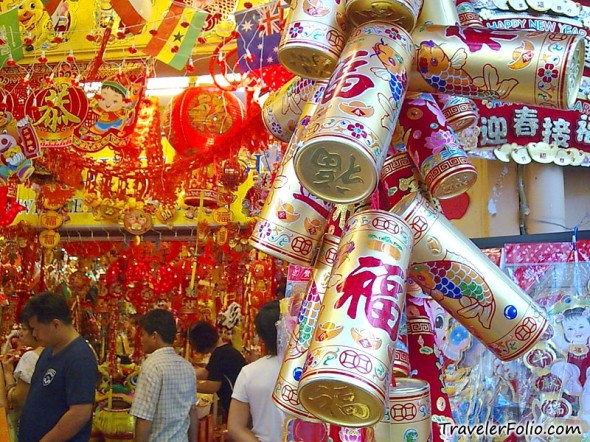
Lion dance toys and other decorations for homes.
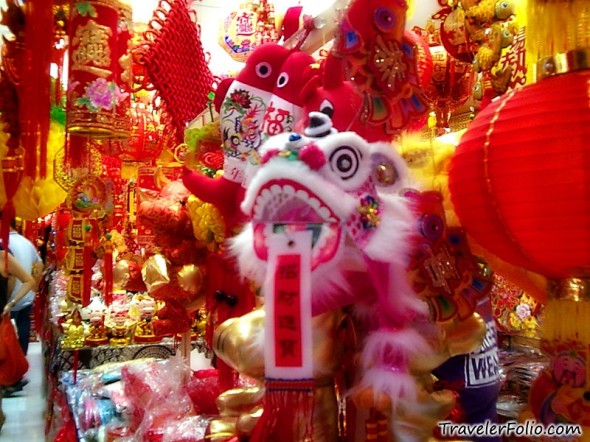
Chinese lion dances can be categorised into two styles, Northern and Southern. The right one below in red, orange and yellow belongs to the Northern dance which was performed as entertainment in imperial court in olden days.
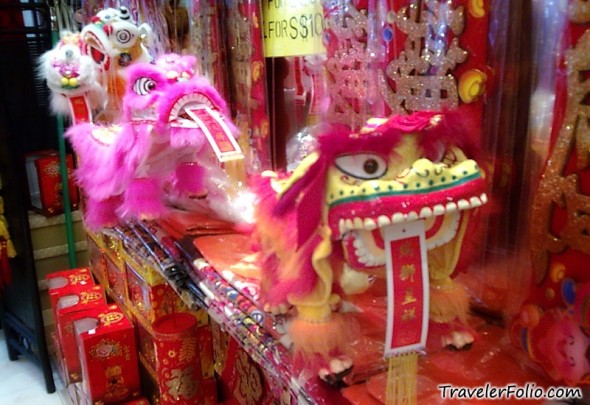
The Southern dance is more symbolic. Like the one on the left pic below, the Southern dance is usually performed as a ceremony to exorcise evil spirits and to summon luck and fortune. Lion dancers are usually members of kung fu clubs; they train hard to master the skills. The southern horned lions are believed to the Nians, the legendary man-eating beasts.
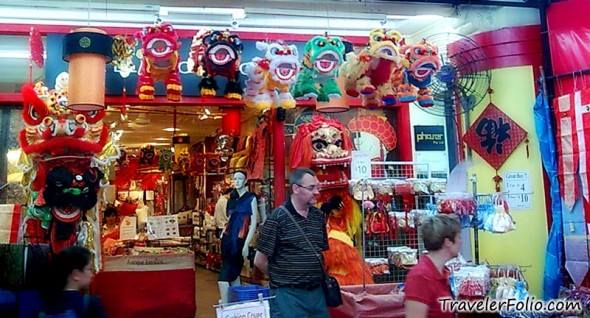
i just noticed the right “lion” has the body of a cow! LOL
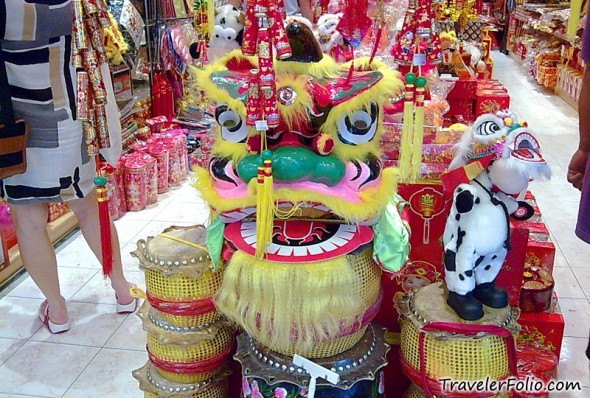
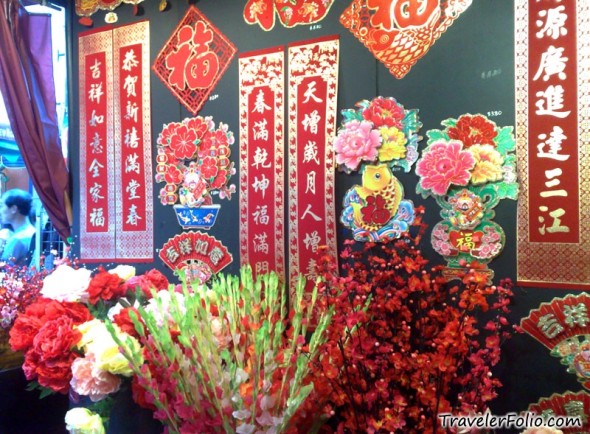
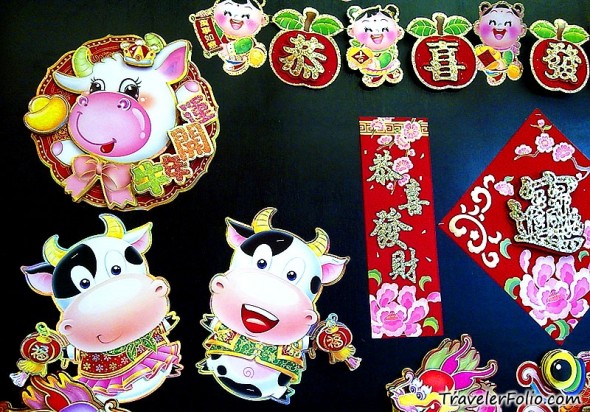
Before Chinese New Year, many Chinese visit Chinatown to shop around. Somehow, it becomes a must-visit site to enjoy the New Year decorations and to soak up the festive atmosphere. However, we can still get better bargains from bazaars in residential areas.
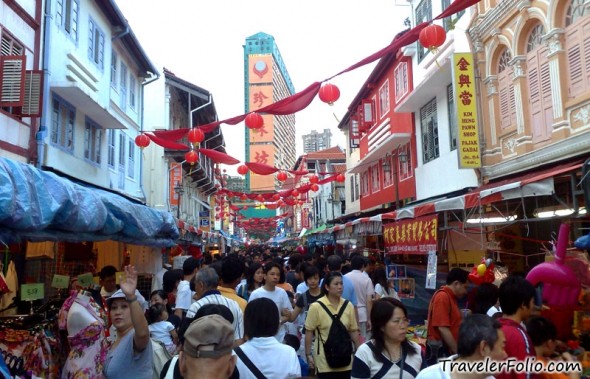
Singapore’s oldest Hindu temple, Sri Mariamman Temple, is located at Pagoda Street, which is also in Chinatown area.
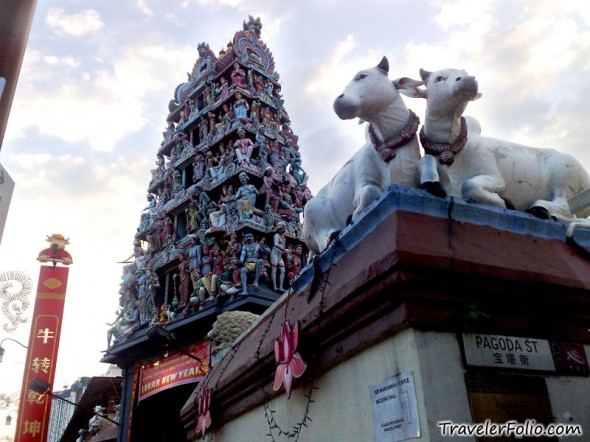
“Yuan Xiao” falls on the 15th of first lunar month (9 Feb), and that marks the end of the Chinese New Year festivities. The day is also known as Lantern festival, and Tangyuan, glutinous rice balls, are eaten again!

Beautiful. Well CNY celebration almost come to an end now
So beautiful!
Eh, Chap Goh Meh right?
Tonight gonna attend a culture night for CNY!
Hoyeah!
Oh, eat tangyuan also ya?
So nice!
Happy New Year, hong pao lai larr! Ha ha! Happy Chap Goh Meh!
adorable photos…
happy new year
and keep up the good posting
Nice walk through of Chinatown in the Year of the Ox. Quite a colourful burst of colours, patterns, shapes and sizes in there, and I bet it comes with all the scents, tastes and sounds of Chinatown! I was there during CNY Eve and experienced an amazing spectacle myself, although this year do seem to be slightly muted compared to the years before.
Happy year of the Ox! Tonight is Chap Goh Mei so enjoy your Chinese Valentine with loved ones!
@ALL: Hey thanks!
Hi Eunice! I’ve been curious about Chinese New Year for a while now. Perhaps you can clarify a question I have. Some sources say that 2009 is the year 4706 in the Chinese calendar, but I asked a few chinese people I knew, and none of them knew about this higher number. Why is this? Is this because that 4706 number is related to the Chinese Zodiac?
I’d appreciate any insight you have.
Thanks!
And keep up the great photos!
Thanks for your great photos! I was able to use them in my Chinese New Year report in my mandarin class! :))
@Lorenz: oh, u should seek permission first before using my photos in this blog.
Any diy ideas fr chinese new year decor fr year of the snake?…any table centrepiece decor?
Very nice photos of Chinatown during CNY!